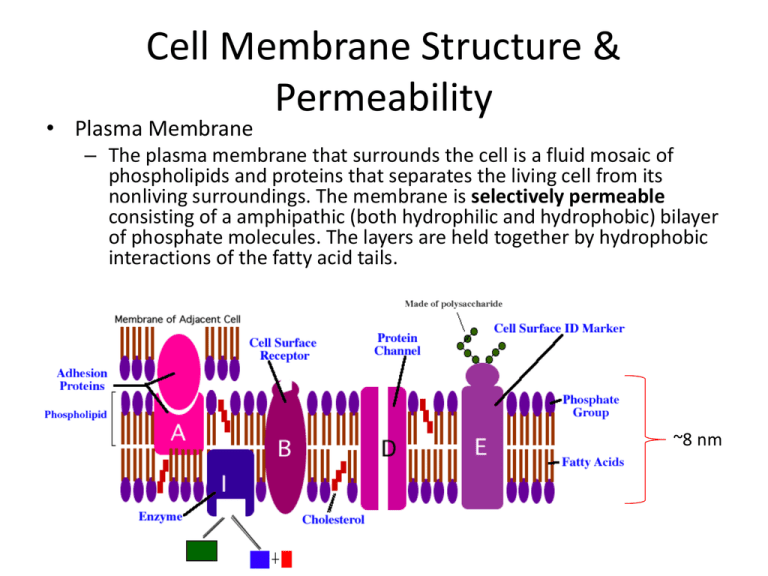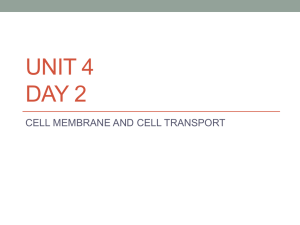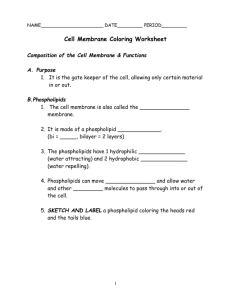Cell Membrane Structure & Permeability
advertisement

Cell Membrane Structure & Permeability • Plasma Membrane – The plasma membrane that surrounds the cell is a fluid mosaic of phospholipids and proteins that separates the living cell from its nonliving surroundings. The membrane is selectively permeable consisting of a amphipathic (both hydrophilic and hydrophobic) bilayer of phosphate molecules. The layers are held together by hydrophobic interactions of the fatty acid tails. ~8 nm Membrane Components • Both the phospholipids and the proteins present in the plasma membrane are amphipathic – Having both a hydrophilic and hydrophobic region – All parts float freely. • Often referred to as a “SEA” of phospholipids • Components move laterally but do change orientation (exo- to endo-) – Movement is constant (~2nm/s for phospholipids) – Movement can be directional for components such as proteins Cholesterol & Unsaturated Fatty Acids • Cholesterol – make the membrane more rigid at higher temperatures – lowers the temperature at which the membrane solidifies • Unsaturated fatty acids – Make the membrane more fluid (resists tight making) Membrane Proteins • Membrane proteins – float freely with their hydrophilic regions in the center of the molecules and their hydrophilic regions extending outwards – some directed or held rigid by internal cytoskeleton fibers – 2 classes • Integral Proteins – has imbedded regions (can be transmembrane or partially imbedded) • Peripheral Proteins – loosely held only at the surface of the membrane • Integrins – Attach to the ECM & to the cytoskeleton to give greater strength & structure Protein Types Protein Type Transport Enzyme Signal Function: Hydrophilic channels and gates Active sites are exposed to speed up metabolic pathways Extracellular receptor sites cause a conformation change sending messages to the internal environment Cell-Cell Recognition Have glycoproteins that act as identification tags Adhesion (joining) Attachment to the ECM Act as gap and tight junctions Maintains cell shape and stabilizes location







